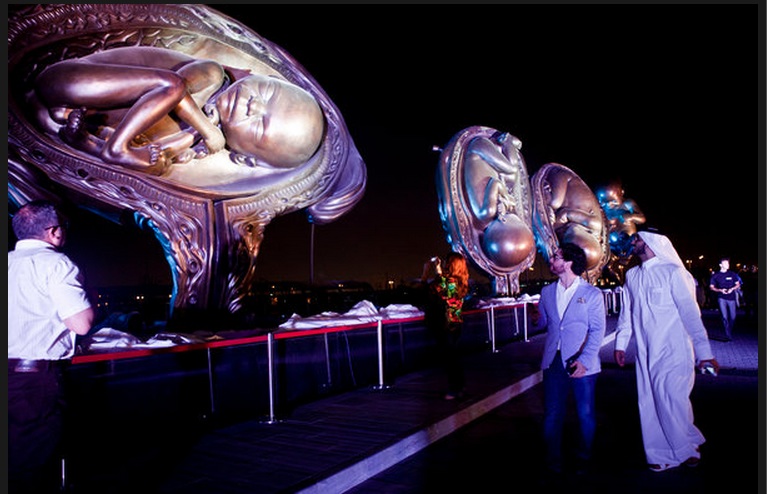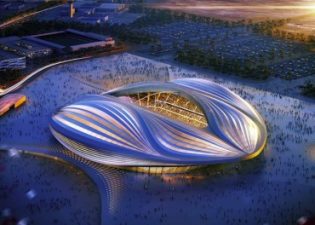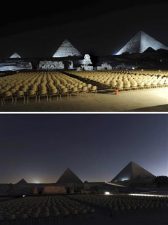 It’s something we can’t avoid as human beings: we begin as naked embryos that go through stages of gestation. We emerge naked, until clothed. This all seems hum drum biology to a western reader, but if you live in a traditional society in the Middle East, there are things about the human body, even as babies, that are kept covered. But UK artist Damien Hirst challenges convention with 14 large naked embryo sculptures now unveiled in Doha.
It’s something we can’t avoid as human beings: we begin as naked embryos that go through stages of gestation. We emerge naked, until clothed. This all seems hum drum biology to a western reader, but if you live in a traditional society in the Middle East, there are things about the human body, even as babies, that are kept covered. But UK artist Damien Hirst challenges convention with 14 large naked embryo sculptures now unveiled in Doha.
While Islamic art has shown nudity in some formats over the generations, it is not common: most of what we see today even avoids presenting the human form.
Hirst, whose shock appeal has faded in the west, has just uncovered his installation in Doha last night called The Miraculous Journey.
Doha is a city more known for covering up than naked “anything” – even in embryonic form.
But as the city tries to bridge the old world values with the new, and rising skyscrapers beside the old image of the Arab desert dweller, this leap into modern art may be one of many new things to bridge, and challenge, the region’s comfort levels.
The sculptures appear out front of the Sidra Medical and Research Center.
The sculptures of embryos and babies were kept secret until last night.
“To have something like this is less daring than to have a lot of nudity,” says Sheika al-Mayassa Hamad who commissioned the art at a cost of about $20 million, she told the New York Times. She cites a passage in the Koran about birth. “It is not against our culture our religion.”
While people in Doha will probably not picket or protest, as it is not their culture to do so, no doubt there will be reactions to this basic body form online.
If the sculptures do get scrapped at least they are made from bronze and can be recycled.
I can recall myself at a young age going to the AGO – the Art Gallery of Ontario – during a time when there was a public discourse about nudity and art. All of the nudes in the galleries at that specific time had their private bits covered up.
I strained throughout the day to see under those paper fig leaves because it was interesting to see what the “other” sex had. Now as wife, and a mother of a boy and a girl, I know what the other has. I don’t need a sculpture to know this, but I didn’t mind the experience of checking to make sure.
I am sure the people of Doha will be curious too, as I was back then. If it’s important for culture and society to be faced with nudity while on our way to school, work or the museum, I am not sure. This is for our culture and society to decide.
Image via NY Times




What a load of baloney. Arabs are conservative, yes, prudish, sure, but to imply that they’d cringe at the site of a naked embryo? There are Arab countries that put their uncovered Greek artifacts on display, including *gasp* nude statues. The only thing Hirst is challenging is the ignorant stereotype of the uncultured, backwards Arab.